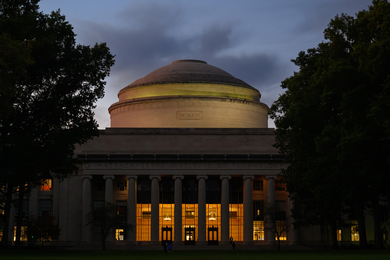NASA is working with an MIT researcher and others to develop software frameworks that will enable more realistic simulations of natural phenomena and interpretation of vast quantities of observational data on high-end computers.
Over the next three years, the agency will pay out $22.8 million to 11 investigation teams attacking challenges as diverse as:
- making it possible for many climate and weather modeling groups to share and reuse each other's software,
- creating multi-year earthquake forecasts,
- predicting space weather using real-time observations, and
- uncovering the workings of gamma-ray bursts.
"These agreements represent a major investment in development of the software infrastructure that is needed to support high-end computing applications in the earth and space sciences," said Richard Rood, acting chief of the Earth and Space Data Computing Division at NASA Goddard Space Flight Center in Greenbelt, Md. "The applications are at the forefront of scientific discovery through computational experimentation and also sit at the foundation of the software codes used to assess climate change."
For instance, teams led by MIT, the National Center for Atmospheric Research and NASA Goddard will be building a prototype software infrastructure that will make it possible for the nation's most widely used climate and weather models and systems for assimilating the latest observational data to readily operate together.
The partners expect the Earth System Modeling Framework to reshape the national modeling community by vastly reducing the effort researchers must expend on developing software and by initiating an unprecedented level of cooperation among leading earth scientists.
Professor John C. Marshall of earth, atmospheric and planetary sciences will lead the portion of the Earth Modeling System Framework that consists of modeling applications.
The $1.8 million project's expected outcome is the integration of major U.S. climate and numerical weather prediction models into the framework.
The Earth System Modeling Framework will handle all communications among atmosphere, land, ocean and other models and will enable them to run on a variety of supercomputer architectures without time-consuming reprogramming.
The framework will improve the fidelity and predictive capability of the models by making it much simpler for researchers to swap and compare alternative scientific approaches from many different sources.
Frameworks for simulating astrophysical phenomena will come from a team at the Lawrence Berkeley National Laboratory that will study star formation and the behavior of matter in microgravity environments, and another, at the University of Illinois at Urbana-Champaign, that will grapple with understanding observational data from gamma-ray bursts, phenomena believed to be the most powerful explosions in the universe.
A version of this article appeared in MIT Tech Talk on May 22, 2002.





